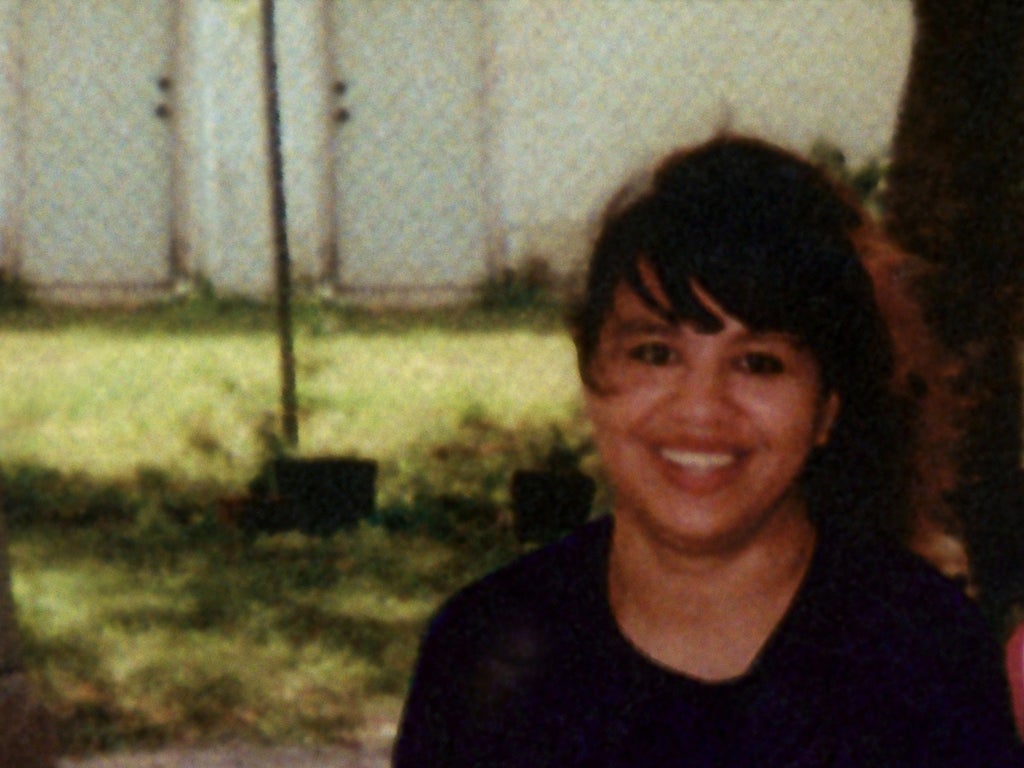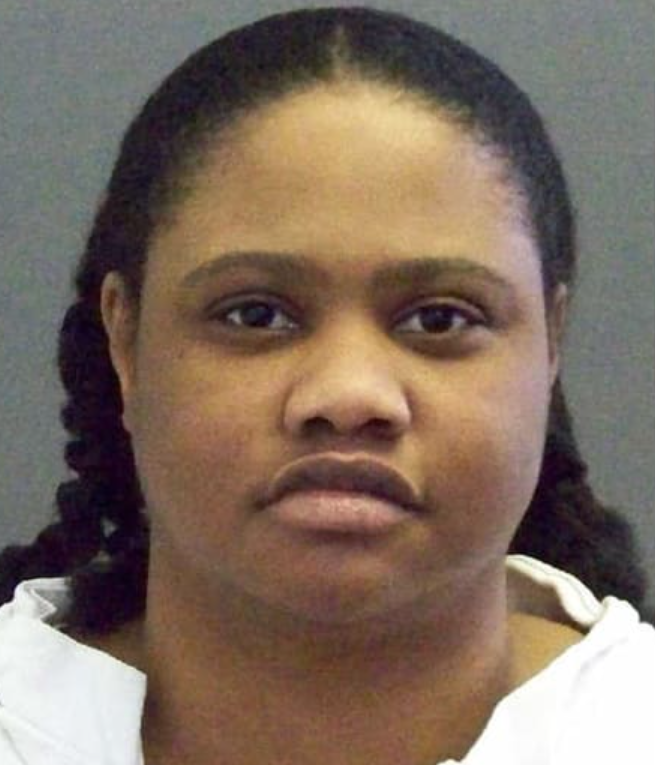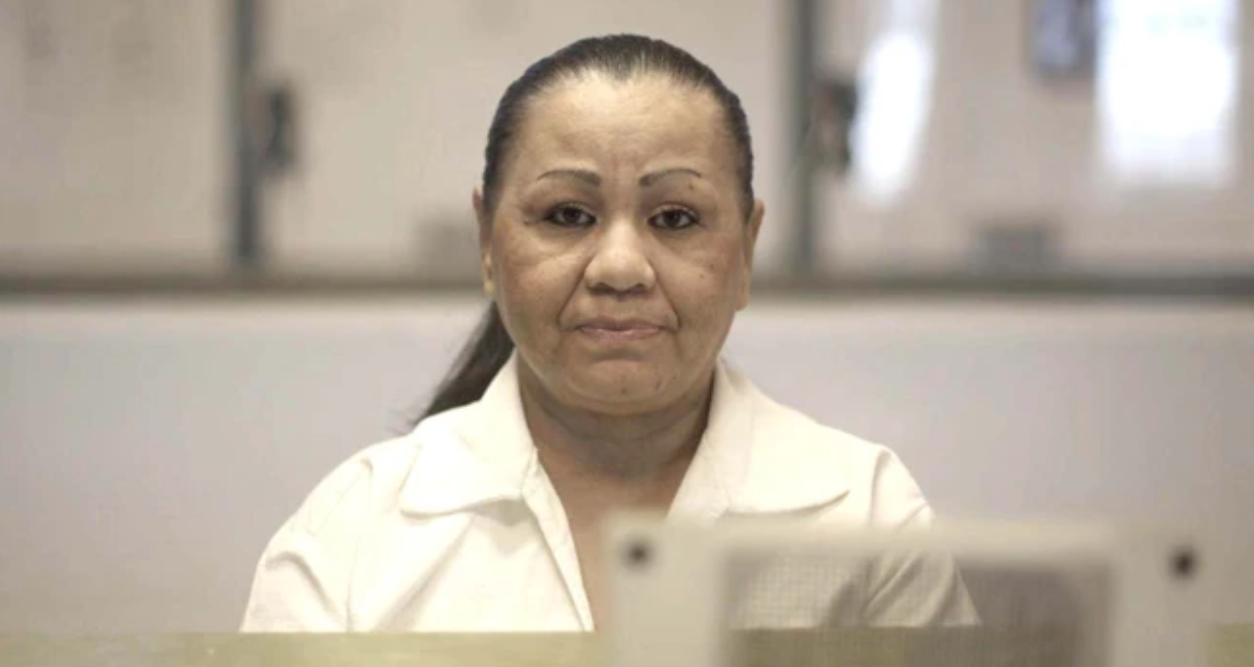
Melissa Lucio was just six years old the first time she was molested by her mother’s live-in boyfriend.
At 16, she became a child bride, marrying an older man in what she said was a desperate effort “to escape” a childhood plagued by rape and physical violence.
Her dreams of a better life failed to become a reality, however, as she found herself again the victim of abuse – this time at the hands of her alcoholic husband.
By the age of 26, she was a single mother to five children and addicted to cocaine.
Another abusive relationship, seven more children and homelessness followed, before – at the age of 40 – Lucio became the first Hispanic woman sentenced to death in Texas for the murder of her two-year-old daughter Mariah.
On 18 October, the US Supreme Court denied a petition to hear Lucio’s case, paving the way for the state of Texas to set her execution date for 26 April.
However, one juror in her trial has stepped forward to say he feels he was misled about the facts of the case and that he then succumbed to “peer pressure” in changing his sentencing vote from life in prison to the death penalty.
In an editorial in the Houston Chronicle on 3 April, Johnny Galvan Jr wrote: “But there were so many other details that went unmentioned. It wasn’t until after the trial was over that troubling information was brought to light.
“If I had known all of this information, or even part of it, I would have stood by my vote for life no matter what anyone else on the jury said.”
Meanwhile, Kim Kardashian has appealed to Texas governor Greg Abbott for clemency for Lucio.
At the centre of Lucio’s fight for her life has been the lack of conclusive evidence that a murder was even committed, with discrepancies in whether Mariah’s fatal head injury was caused by an individual or by a fall down the stairs.
Additionally, two key witnesses for the defence were blocked from testifying at her trial that she gave a false confession, relenting to the will of a male officer following a lifetime of abuse at the hands of men.
“Melissa Lucio’s case is an example of how the US legal system continues to ignore the consequences of gender-based violence in sentencing women to death,” Sandra Babcock, faculty director of the Cornell Center on the Death Penalty Worldwide and consultant to Lucio’s legal team, tells The Independent.
“As a result, a battered woman is facing execution for a crime she did not commit.”
The Supreme Court had been the last hope left for Lucio, now 53, after exhausting all her legal appeals over the last 13 years.
The 2 per cent of death row
Lucio is just one of 51 women currently on death row across America.
All are awaiting state executions after the last woman on federal death row – Lisa Montgomery – was put to death in January, during Donald Trump’s last week in office.
While the numbers are still high, women are far less likely to wind up on death row, or be executed, than men.
Female inmates make up just 2 percent of the total death row population with 2,541 men currently awaiting execution, according to the NAACP Legal Defense Fund.
Since 1976, when the death penalty was reinstated, 17 women have been executed compared to 1,519 men.
So why is there such a big difference in the numbers of men and women given the death penalty?
While it would be easy to suggest women are treated more leniently when it comes to capital punishment, Professor Elizabeth Rapoport from the University of New Mexico School of Law tells The Independent this isn’t the case.
Instead, she says the gap actually comes down to the different types of crimes carried out by men and women.

“Women commit around one in eight murders but they don’t commit the kinds of murders that land people on death row,” she says.
“Most people on death row commit murder in the act of something else like robbery and murder or rape and murder - and women just don’t commit these types of crimes.”
Other aggravating factors that can lead to a death sentence, such as a long criminal record, are also less common among female offenders, she adds.
But, for Babcock, asking why there are far fewer women on death row is the wrong question.
“This leads to misassumptions about the treatment of women in the criminal justice system and also ignores the very real discrimination of women facing death sentences,” she says.
Instead, Babcock says, the question is: why these women?
‘The wrong kind of woman’
A 2018 report from Cornell Law School, titled “Judged For More Than Her Crime“, found that most women sentenced to death have been convicted of killing a family member such as their child or husband.
But, the research also found that women are more likely to be sentenced to death if their crime or behaviour deviates from society’s expectation of what constitutes a “good woman”.
For example, if the crime is particularly violent or involves the death of a child, then the woman and her actions are deemed more “unnatural” because of the view she should have a maternal instinct.
“A crime is seen as particularly heinous because it is committed by a woman,” Mary Atwell, professor of criminal justice at Radford University, tells The Independent.
“Our societal expectations are that women are non-violent, kind, and gentle so it is easy to play up to emotions that a woman who commits a violent crime is not a normal woman, that she is against the pale and ‘not like us’.”
“A jury can then move beyond treating the woman in a humane way because they view her as having already stepped outside the border of humanity.”

This means that men and women receive different sentences even when they are involved in the same crime, according to Atwell.
Three of the 17 women executed since 1976 were given the death penalty for killing their husbands.
In each of those cases, it was the women’s lovers who committed the physical acts of murder.
And in each of those cases, the women were sentenced to death while their boyfriends were given life sentences.
Take Teresa Lewis, for example. Lewis was executed in Virginia in 2010 for the murder of her husband and stepson in a plot to get a large life insurance windfall.
Her two accomplices, Rodney Fuller and Matthew Shallenberger, were given life sentences. Fuller and Shallenberger shot the two victims dead.
“The woman who doesn’t kill is punished more than the man who pulls the trigger because she is seen as an ‘unfaithful wife’,” explains Atwell.
Dubbed the “evil woman” or “wretched woman” theory, there is a whole line of thinking that a woman is given the death penalty when she breaks gender norms as a mother, wife or caregiver and is instead cast as a so-called “femme fatale”.
Put simply, she is seen as “the wrong kind of woman”, explains Rapoport.
This is even true, says Atwell, when the woman’s “unlady-like behaviour” has no connection to the crime she is convicted of.
Lacy underwear equals guilt
Many of the women currently on death row or executed over the last four decades were painted as hyper-sexual, promiscuous or sexually deviant at their trials, Atwell says.
“Society says she has killed but it also says she is a cheating wife, a lesbian or a promiscuous woman,” she says.
During Brenda Andrew’s trial for killing her husband in 2001, jurors were regaled with tales about the married Sunday school teacher’s promiscuity.
At trial, the prosecution read aloud a passage from her husband’s diary where he had discovered her cheating on him with a former boyfriend.
The passage was written – and the alleged adultery took place – 17 years before his murder.
Prosecutors also introduced as evidence a book found in a dresser in Andrew’s bedroom. It was titled “203 Ways To Drive A Man Wild In Bed”.
Perhaps the most shocking detail came in the closing arguments, when the prosecutor showcased Andrew’s lacy bras and underwear in the courtroom – as apparent evidence of her guilt.

“The grieving widow packs this to run off with her boyfriend,” the prosecutor said, while brandishing her intimate possessions.
“The grieving widow packs this to go sleep in a hotel room with her children and her boyfriend.
“The grieving widow packs this in her appropriate act of grief.”
Andrew and her accomplice James Pavatt were both given the death penalty.
At an appeal, one judge described how Andrew was tried for being a “bad wife, a bad mother, and a bad woman” rather than a killer.
However, this judge was in the minority and Andrew lost her appeal. She is currently the only woman on death row in Oklahoma.
It’s perhaps difficult to imagine a prosecutor brandishing a pair of boxer shorts in front of a jury to show that a man’s sexually promiscuous character should warrant his death sentence.
“Reading trial transcripts of women on death row feels like we’re reading 18thcentury aspersions on women’s behaviour as the way women are categorised is so reminiscent of Victorian ideals of femininity,” says Babcock.
Unlike men, women are put on trial not only for their crimes – but also for their characters, she says.
The double discrimination of women of colour
When race is also added into the equation, women face another layer of stigma, Sydney McKinney, executive director of the National Black Women’s Justice Institute, tells The Independent.
Black women make up 24 per cent of all women currently sitting on death row despite accounting for just 13 per cent of American women.
“In this country Black women are already seen as more masculine and less feminine than white women,” says McKinney.
So discrimination towards women of colour is already a factor before any crime is even committed.
“This explains why Black women experience much harsher sentences as we are just inherently seen as being more undeserving of care and compassion than white women in the legal system,” she says.
When Erika Sheppard was convicted of murdering a white woman in Texas in 1993, the 19-year-old’s race sealed her fate on death row, says Babcock.

Throughout her trial, the prosecution used racially charged language and animal imagery of a “predator” and a “jackal” to present the Black teen to the majority white jury.
“When we look at the tactics and language that is used to describe the behaviour of a woman of colour it is inflected by both those negative gender stereotypes and racist tropes,” says Babcock.
“It taps into those efforts by white people over centuries to dehumanise and defeminise Black women.”
Yet, while society’s different expectations of men and women play a part in society’s decision to send them to death row, the different life experiences of the two genders are not looked on with the same gravity.
A lifetime of abuse
In the US prison system, 86 per cent of women who have spent time in jail have been sexually assaulted at some point in their lives, according to survey by the Vera Institute of Justice.
On death row specifically, a lifetime of domestic abuse and sexual violence unites “every single woman” awaiting execution, says Babcock.
“This is gender-based violence that is linked to their status as women – they have been raped, experienced violence in intimate relationships, received no protection from the state and suffered mental illness from that trauma,” she says.
There are two elements at play here, explains Babcock: the abuse is often directly related to the crime a woman is then convicted of, and the impact of this abuse on her behaviour is ignored when she is sentenced.
Women are “under-recognized as victims and over-penalised as perpetrators”, says Babcock.
“Our system just doesn’t see women as both victims and perpetrators.”
In Lucio’s case, her abusive childhood led her to enter two abusive relationships and become a mother of 14 children (Lucio gave birth to two more children – twins – while behind bars).
The abuse even led to her incriminating herself in a crime she didn’t commit, says Babcock.
Lucio’s conviction rested on her apparent confession to a Texas ranger on the night Mariah died.
During the five-hour interrogation, Lucio said she sometimes spanked Mariah and admitted to causing some of the bruising on her body.
“I guess I did it,” she said.

Lucio always maintained that she didn’t cause the fatal head injury that killed her daughter and social work records showed she had no history of abusing her children.
But those five words and her demeanour during the interrogation was presented as proof of her guilt at trial.
The ranger who interviewed her was allowed to testify that he knew she “did it” because of her “slumped posture, passivity, and failure to make eye contact during interrogation”.
The defence tried to introduce two experts – a psychologist and a social worker – to testify that her behaviour in the presence of the male authority figure was typical of a battered woman who had suffered years of abuse since childhood.
The judge refused to allow their testimony.
“Melissa’s entire life was shaped by the violence she experienced at the hands of men,” says Babcock.
“But a jury was denied from hearing how her experiences of gender-based violence explained her behaviour in a way that is completely consistent with her innocence.”
Babcock explains that Lucio’s behaviour was a “survival strategy” typically seen in victims of abuse.
“Women who experience this trauma are uniquely affected by male authority figures so the aggressive interrogation by a male police officer affected her reaction,” she says.
“It’s a survival strategy when you have experienced sexual abuse at an early age – make yourself invisible, don’t irritate your abuser, cast your eyes down, withdraw… those are all symptoms of severe trauma.
“But the jury was allowed to make judgements of her behaviour and guilt without being informed of her history and how that affected her interrogation and her acquiescence to a male cop.”
Babcock tells The Independent she questions how a woman’s supposed sexual deviance can be used to sentence her to death but a woman’s past experiences of sexual abuse can be ignored.
Lucio was finally granted a new trial in 2019 after an appeals court agreed that her rights had been violated at her trial.
But this was swiftly undone when the state of Texas filed a petition and a court sided with it.
The petition to ask the Supreme Court to hear Lucio’s case had been the final avenue left.
Lucio’s attorney Tivon Shardl tells The Independent the legal team will continue to look for ways to try to save her life: “We will continue the fight to save Melissa Lucio from being wrongfully executed.”
The Independent and the nonprofit Responsible Business Initiative for Justice (RBIJ) have launched a joint campaign calling for an end to death penalty in the US. The RBIJ has attracted more than 150 well-known signatories to their Business Leaders Declaration Against the Death Penalty - with The Independent as the latest on the list. We join high-profile executives like Ariana Huffington, Facebook’s Sheryl Sandberg, and Virgin Group founder Sir Richard Branson as part of this initiative and are making a pledge to highlight the injustices of the death penalty in our coverage.







